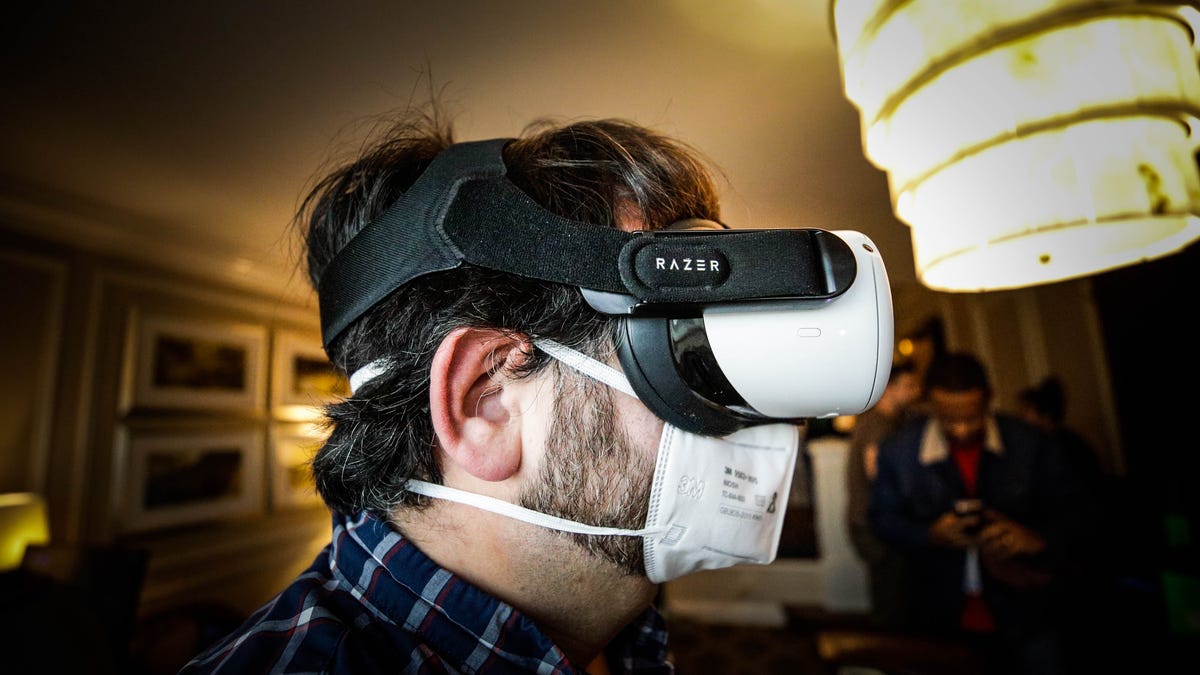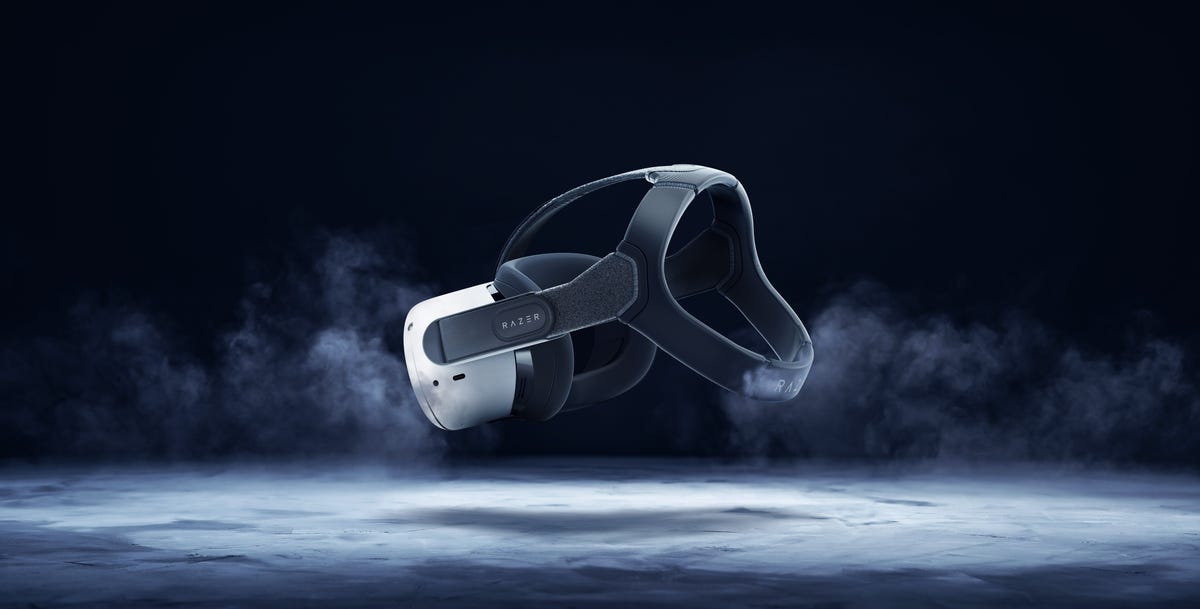
Wearing Razer’s new head strap: it reminds me of my CPAP!
James Martin/CNET
![]()
I didn’t expect Razer to announce a partnership with ResMed, a health tech company that makes the CPAP I sleep with on my face each night. I also didn’t expect Razer to start making Meta Quest 2 accessories. Both are true statements, and both help describe the Razer Adjustable Head Strap and Facial Interface, an accessory kit coming to the Quest 2 in the first quarter of this year. I tried it out at CES 2023 in Las Vegas.
There are already plenty of head straps and face masks available for the Quest 2, but Razer’s partnership with Meta is new and ongoing, and could possibly lead to other accessories for future Meta headsets in the future, including the Quest 3, which is expected this year.


Watch this:
Razer’s Wild New CES Gaming Gear: Game Handhelds, 3D…
5:15
The partnership with ResMed is technically separate from the one with Meta, meaning Razer could potentially have other future accessories emerge that won’t be VR or Meta-related at all. Maybe it’s a sign Razer is getting more serious about the health tech claims of some of its products (remember the Zephyr Pro mask?).


Razer’s head strap system for the Quest 2 is co-developed by a CPAP manufacturer. It’s a smart idea.
Razer
The head strap design, meant to more snugly fit on your head and be easier to take on and off, has elastic nylon that cradled my head and felt cushioned. I wore it, and liked it. A padded silicone face mask had a more pillowy, comfortable feel than others I’ve tried, too.
The head strap made me think of how my CPAP fits my head at night, which is no surprise: it feels, in many ways, inspired or derived from CPAP devices. But the head strap feel, putting it on and taking it off also made think of a baseball cap: The weight distribution helped the Quest 2 seem less top-heavy.
For more active fitness games or workouts in VR, the Adjustable Head Strap could be a solid answer. Personally, I’m even more interested in what Razer has planned with these partnerships next. Maybe it’s a foot in the door for the future of face-worn Razer tech.
